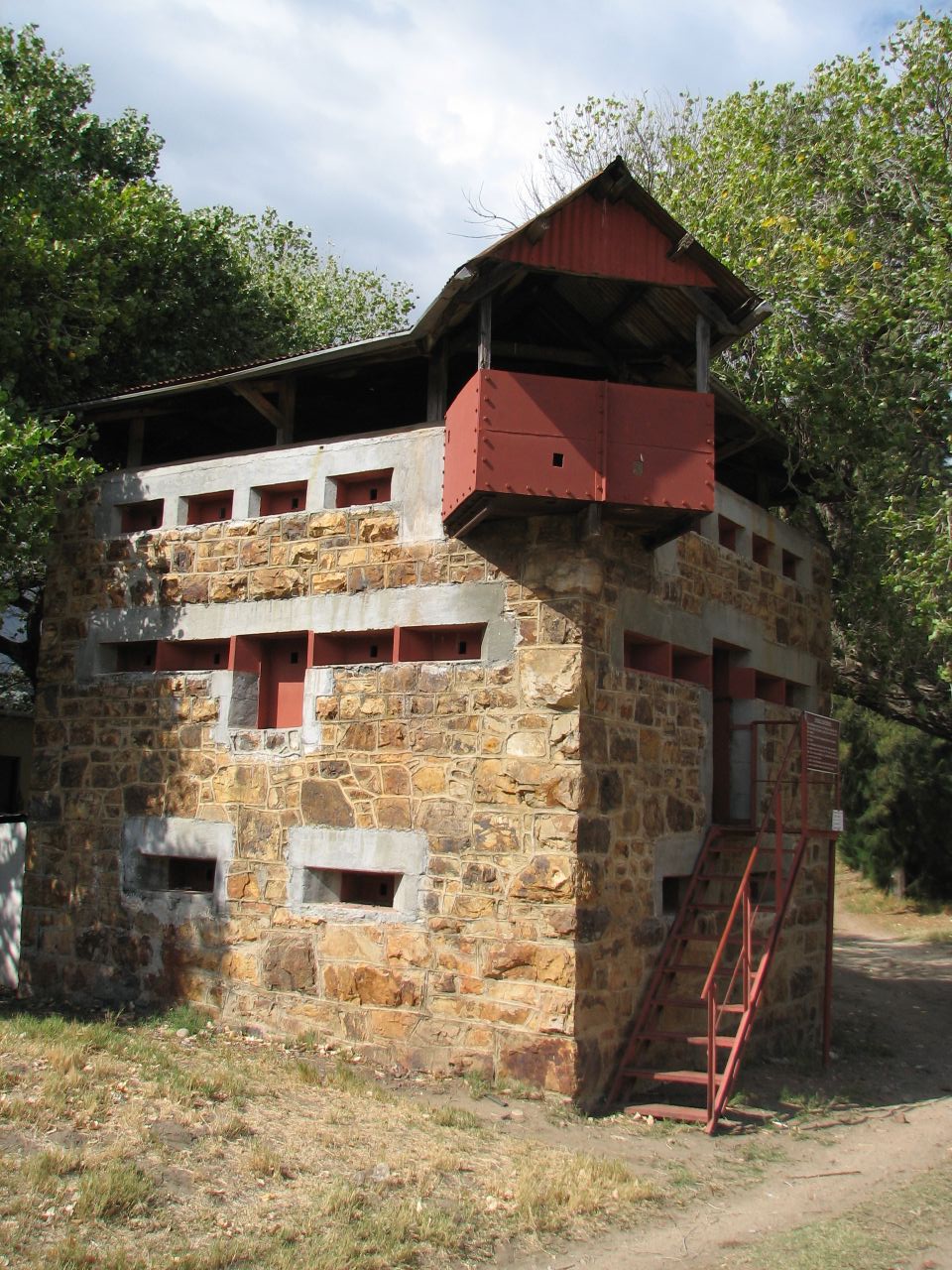Why do the forts (and... to some extent.. white american settlements) that located in the western part of the USA and built during 1860s-1900s are all built much like medieval castles?
OK those forts are all made of wood (either planks, or logs.. commonly a combination of both) and (a bit of) earthworks. all are having (light) cannons mounted on its towers (or.... should we call it.. Blockhouse?) and its keep. usually at its top floors.... the fort itself has a palisade wall and usually built in rectangular plan. the palisade sometimes has a catwalk near its top... inside the wall there are facility buildings...
- Barracks/living quarters
- Storage
- Canteen
- Medical station
- Chapel (assume that the garrisons are caucasoids. majority of them are Christians but do the natives learn to build such fortifications?)
- Dungeon (or Stockade.. for modern terms)
- Latrines
all of which are built by the walls. sometimes those buildings are the part of the main walls ITSELF!... the arrangements of those buildings finally formed a court structure. which the parade ground is at its center....

^ An actual Fort Utah. built by Mormons

^ Timpo playset. this is the typical Wild West fort.

^ Wild West style fort.. now with its interior..
Those examples showed that those forts are built MUCH LIKE MEDIEVAL CASTLES. an enclosed area with a high curtain walls. and tall towers on each corner. this design has a LIMITED battle worthyness. judging by the late 19th century warfare... y'a know. in 15th century. cannons already made a medieval castles and its defensive systems obsolette. while it gave birth to a spiky designs known as Star Fort... which widely used in Europe and America (but saw limited use in Asia).. a key feature of star fort was a very thick wall and its pointy bastions. the wall usually made of a combination of earthworks and either masonry or wood. this is a very effective design that still used during American civil war (except that rifled cannons can pierce a very thick brick walls. thus making many forts built at that time to be a bit like trenchworks. but many of them still looks like star fort but built of woods and sandbags instead of bricks)... in the wild west however. forts are built like castles and without any dirt fillings on its palisade walls.
- Why do wild west forts built like Castles instead of Star Forts? was that because of the low threats of artillery attacks? (Natives and Bandits have a very limited access to artillery. but it doesn't mean they don't use explosives. TNT and Dynamite are hollywood romanticization of Wild west mythios.. but what if the attackers were a 'lost brigade' of the Civil War and still possesses numerous cannons and its ammo?)
- And why aren't those forts have any earthworks on its palisade walls?
- possible hostile nations that may attack the USA from the west. if there's any. why are those forts still built in a very obsolette designs (ok... obsolette judged by its battleworthyness)
OK those forts are all made of wood (either planks, or logs.. commonly a combination of both) and (a bit of) earthworks. all are having (light) cannons mounted on its towers (or.... should we call it.. Blockhouse?) and its keep. usually at its top floors.... the fort itself has a palisade wall and usually built in rectangular plan. the palisade sometimes has a catwalk near its top... inside the wall there are facility buildings...
- Barracks/living quarters
- Storage
- Canteen
- Medical station
- Chapel (assume that the garrisons are caucasoids. majority of them are Christians but do the natives learn to build such fortifications?)
- Dungeon (or Stockade.. for modern terms)
- Latrines
all of which are built by the walls. sometimes those buildings are the part of the main walls ITSELF!... the arrangements of those buildings finally formed a court structure. which the parade ground is at its center....

^ An actual Fort Utah. built by Mormons

^ Timpo playset. this is the typical Wild West fort.
^ Wild West style fort.. now with its interior..
Those examples showed that those forts are built MUCH LIKE MEDIEVAL CASTLES. an enclosed area with a high curtain walls. and tall towers on each corner. this design has a LIMITED battle worthyness. judging by the late 19th century warfare... y'a know. in 15th century. cannons already made a medieval castles and its defensive systems obsolette. while it gave birth to a spiky designs known as Star Fort... which widely used in Europe and America (but saw limited use in Asia).. a key feature of star fort was a very thick wall and its pointy bastions. the wall usually made of a combination of earthworks and either masonry or wood. this is a very effective design that still used during American civil war (except that rifled cannons can pierce a very thick brick walls. thus making many forts built at that time to be a bit like trenchworks. but many of them still looks like star fort but built of woods and sandbags instead of bricks)... in the wild west however. forts are built like castles and without any dirt fillings on its palisade walls.
- Why do wild west forts built like Castles instead of Star Forts? was that because of the low threats of artillery attacks? (Natives and Bandits have a very limited access to artillery. but it doesn't mean they don't use explosives. TNT and Dynamite are hollywood romanticization of Wild west mythios.. but what if the attackers were a 'lost brigade' of the Civil War and still possesses numerous cannons and its ammo?)
- And why aren't those forts have any earthworks on its palisade walls?
- possible hostile nations that may attack the USA from the west. if there's any. why are those forts still built in a very obsolette designs (ok... obsolette judged by its battleworthyness)



